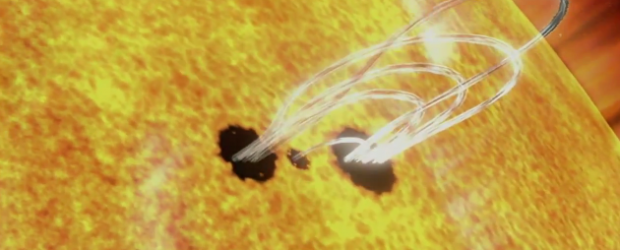Source: The Watchers - 2/02/13, By Adonai

On July 18, 2012, a fairly small explosion of light burst off the lower right limb of the sun. Such flares often come with an associated eruption of solar material, known as a coronal mass ejection or CME – but this one did not.
Something interesting did happen, however. Magnetic field lines in this area of the sun’s atmosphere, the corona, began to twist and kink, generating the hottest solar material — a charged gas called plasma — to trace out the newly-formed slinky shape. The plasma glowed brightly in extreme ultraviolet images from the Atmospheric Imaging Assembly (AIA) aboard NASA’s Solar Dynamics Observatory (SDO) and scientists were able to watch for the first time the very formation of something they had long theorized was at the heart of many eruptive events on the sun: a flux rope.
Eight hours later, on July 19, the same region flared again. This time the flux rope’s connection to the sun was severed, and the magnetic fields escaped into space, dragging billions of tons of solar material along for the ride – a classic CME.
Such flux ropes have been seen in images of CMEs as they fly away from the sun, but it’s never been known – indeed, has been strongly debated – whether the flux rope formed before or in conjunction with a CME’s launch. This case shows a clear-cut example of the flux rope forming ahead of time.
Credit: NASA SDO / NASA Goddard Space Flight Center

